Not far from the ARCA museum center and the Angel Tower stands one of Vercelli’s museum jewels: the Leone Museum. In fact, the museum brings together three buildings from three different eras, so visiting the venue on Via Giuseppe Verdi is like visiting three museums. The museum tour begins with Casa Alciati, an example of a Renaissance stately home. A cloistered structure with an inner courtyard is overlooked by nine frescoed rooms that hold one of the most important pictorial cycles of early 16th-century Piedmont. The frescoes were created by an anonymous group of artists between the late 15th century and the beginning of the third decade of the 16th century, drawing on prints and decorative inventions of archaeological taste and attesting to an excellent knowledge of the later Roman pictorial works of Michelangelo, Raphael and Baldassarre Peruzzi. Almost certainly, however, given the extent of the cycle, it is assumed that it must have been a fairly large group of artists.
The frescoed rooms reveal subjects ranging from mythological to historical and religious themes. One can recognize graceful figures, unicorns, faces, players, grotesques, and lions’ faces. One room has female figures seated on thrones on the walls, interspersed with caryatids, and an upper band with young nude male figures overlooking dragons. Although kept in the mansion of one of Vercelli’s most prominent families, the Alciati, therefore probably seen by their guests, it seems that the frescoes remained almost “invisible” to the eyes of the city’s artists, literati and historiographers, as these were rediscovered only in the 1930s following renovations under a layer of drabness. There are no precise records of these fresco works-a rather strange fact when one considers that such a large cycle of frescoes did not arouse interest either among the Alciati’s contemporaries or over the next four centuries.
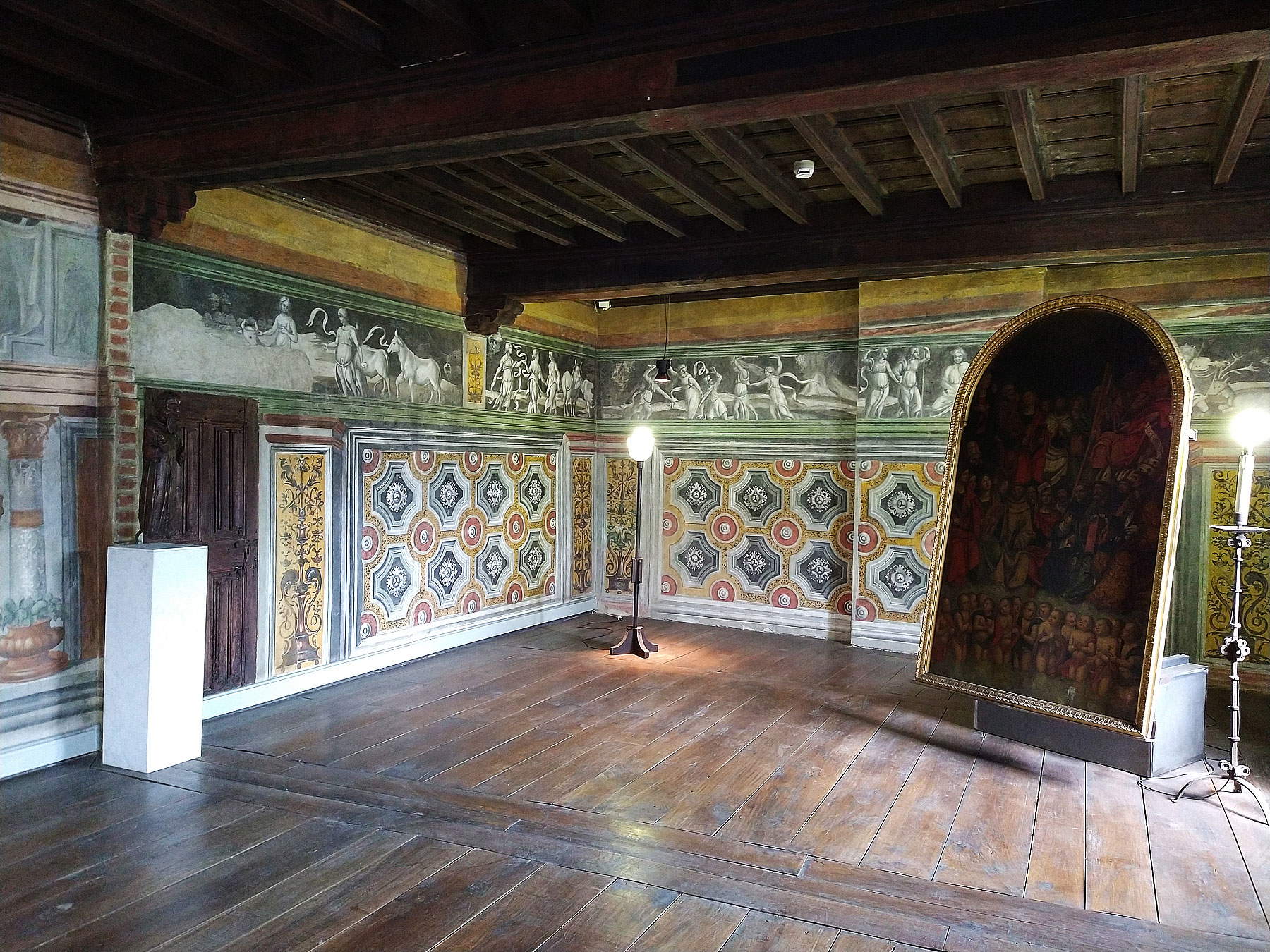
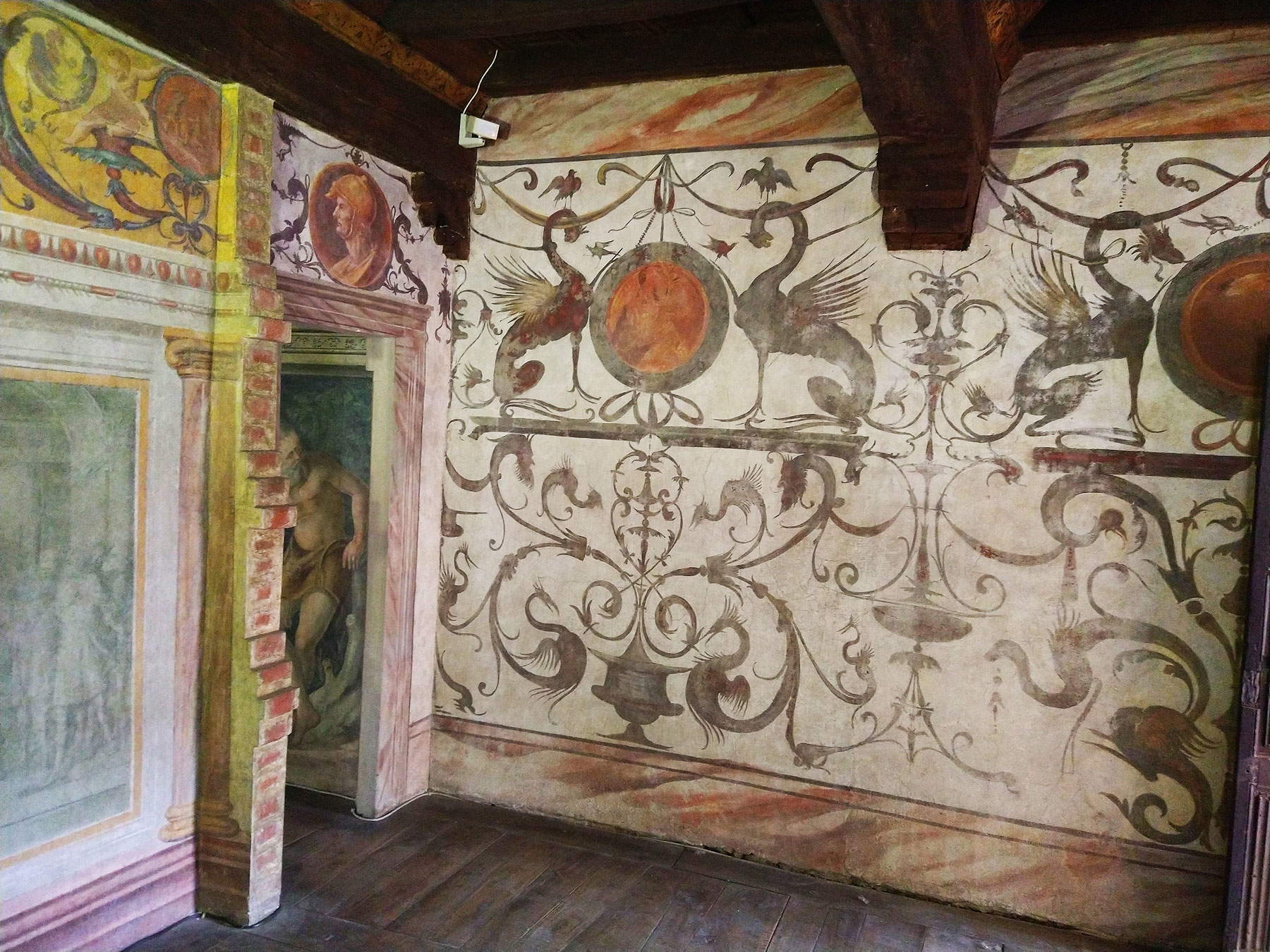


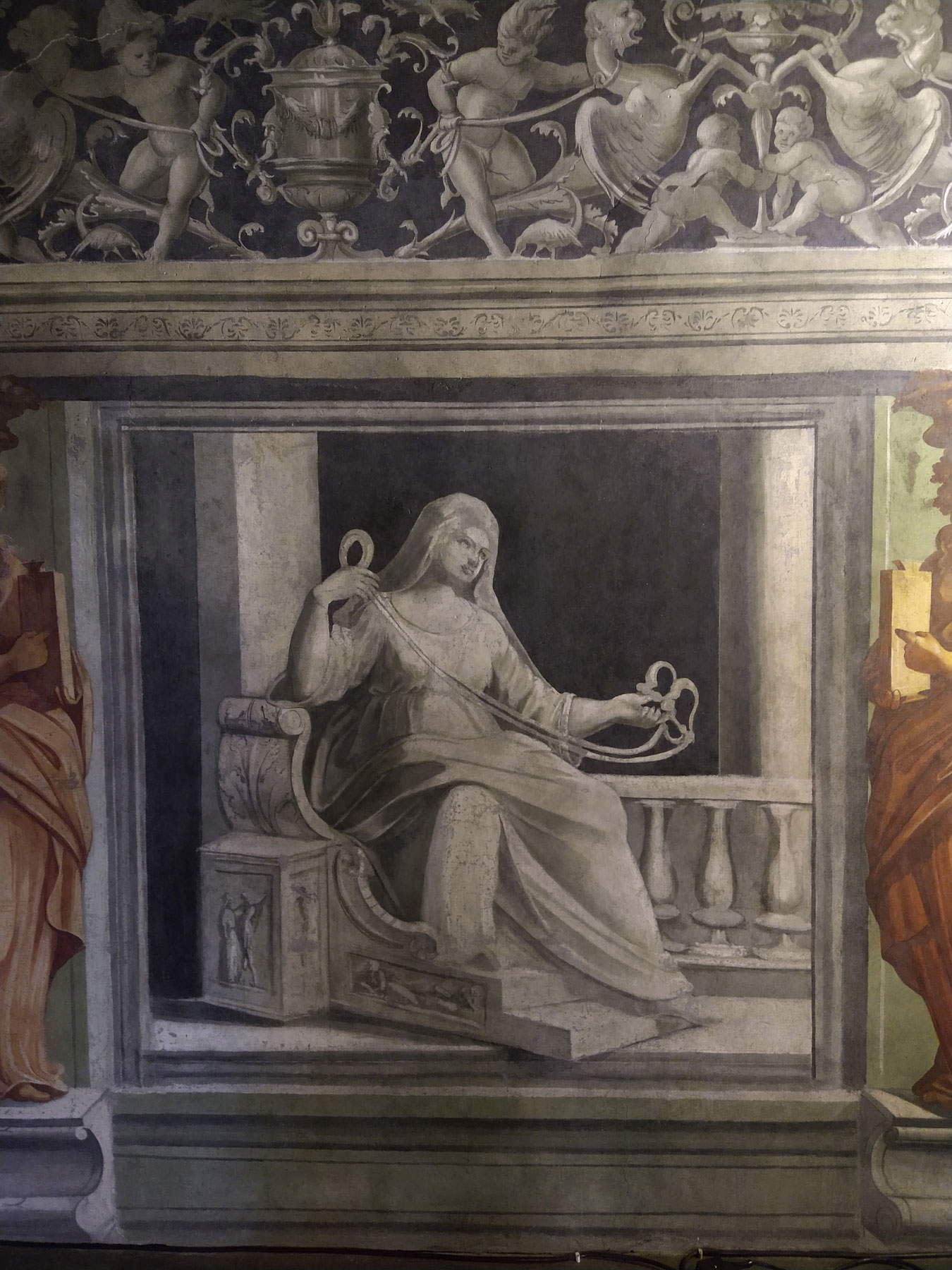
A connecting sleeve leads from Casa Alciati to Palazzo Langosco, the Baroque part of the Leone Museum. The connecting sleeve, on the other hand, has existed since 1939: in fact, it was inaugurated on the occasion of Benito Mussolini ’s visit to Vercelli for the exhibition Vercelli and its provicia from Romanity to Fascism. Designed by architect Cavallari-Murat and set up by the director of the Vercelli museums at the time, Vittorio Viale, the connecting wing consists of a series of rooms in which each room evokes the historical era of the exhibits. From an ancient peristyle, the Hall of Columns, the visitor travels through a Roman basilica (the Roman Hall), the apse of an early Christian church (the Hall of the Crucifix), the remains of the Romanesque church of Santa Maria Maggiore, and on to the Hall of Plastics with its medieval triple lancet windows. In this wing, the Leone Museum also houses the lapidary collected and studied in Vercelli by Barnabite Father Luigi Bruzza, a friend of Camillo’s and as passionate as he was about archaeology and culture. It is also possible to see the cast of the Crucifix from Vercelli Cathedral, a masterpiece of 11th-century Romanesque goldsmithing, and the sculptures from the Cathedral pulpit, made in the third decade of the 13th century (the pulpit was destroyed in 1570 and from that time the dispersion of the sculptures that made it up began).
At the end of the connecting sleeve, we come, as mentioned, to Palazzo Langosco, which has a late Baroque architectural structure. With an open trapezoidal plan, the building was built in 1742 on the initiative of Gioachino Ignazio dei conti Langosco di Stroppiana, descendants of the Langosco family of Casale Monferrato, by renovating two pre-existing bodies and connecting them on the north side with a wing characterized by a stately atrium and a monumental staircase. The entrance portal and atrium are decorated with 18th-century stuccoes with architectural and plant motifs; stuccoes are also found in the floral festoons adorning the windows of the ground-floor and main-floor rooms. These rooms are also frescoed on the vaults with allegorical or mythological subjects. In the atrium at the foot of the grand staircase, Bishop Carlo Martiniana’s gala saloon, which, according to tradition, was used by Napoleon when he passed through Vercelli for the Battle of Marengo in 1800, is still on display.
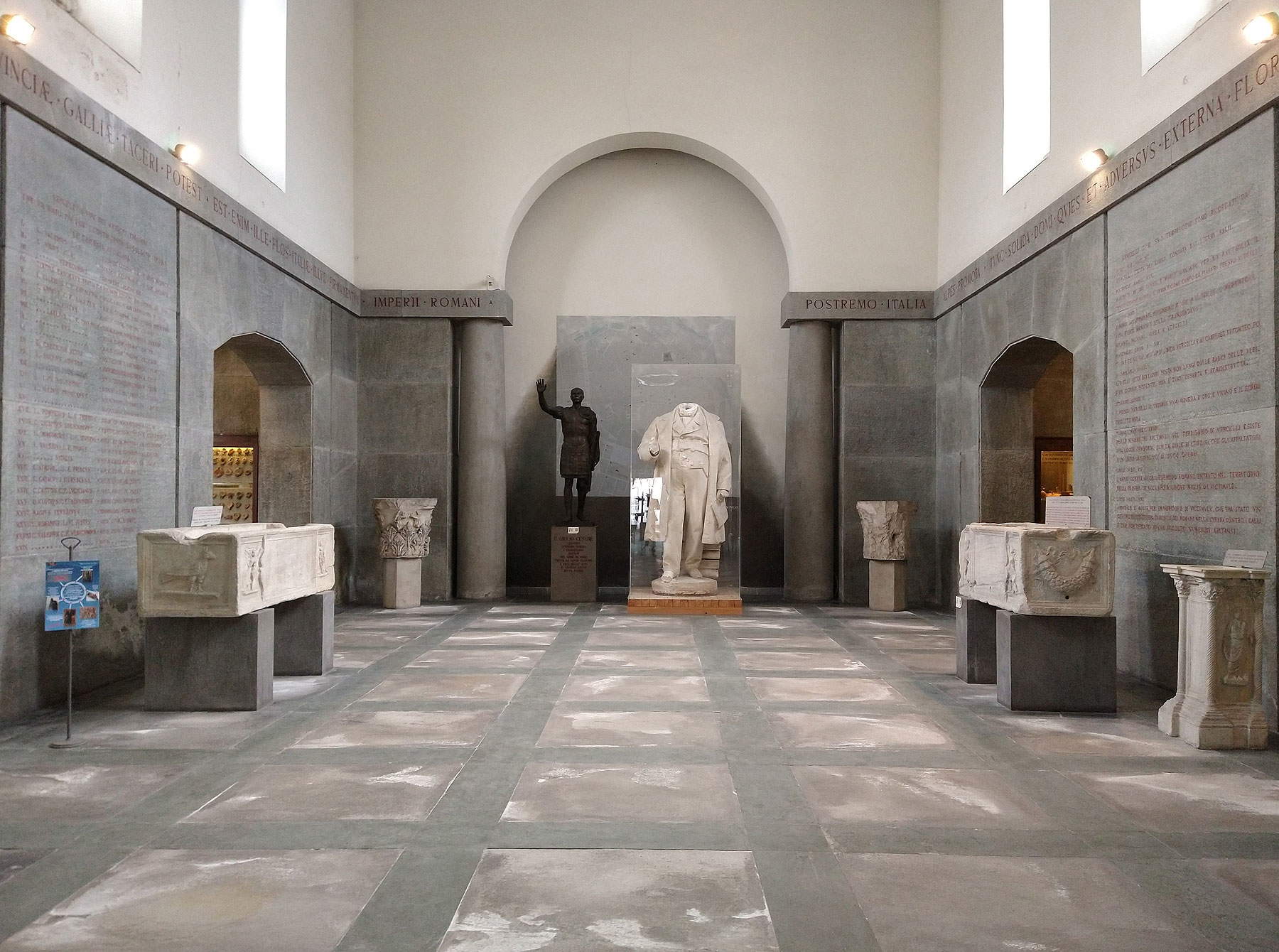

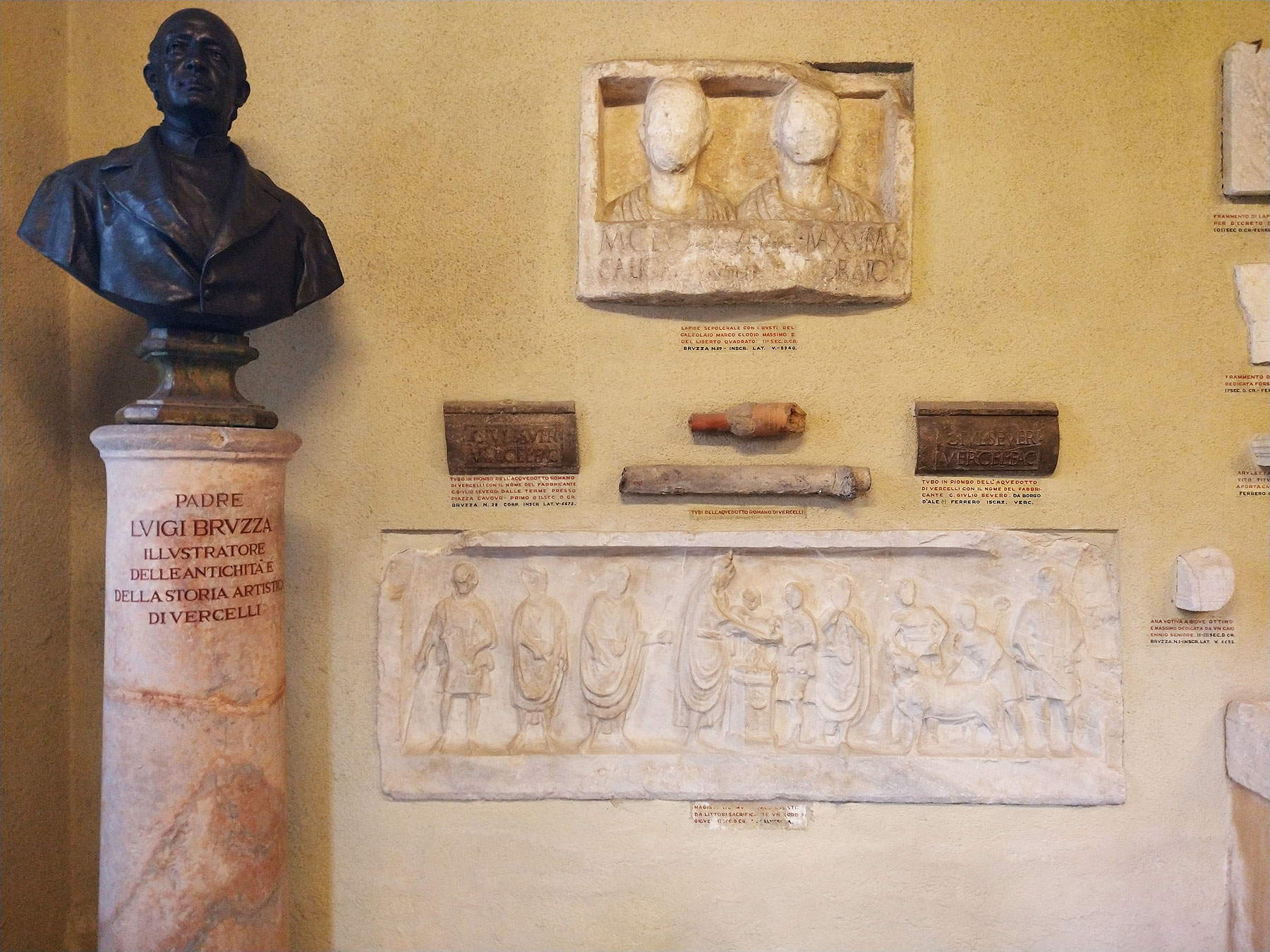


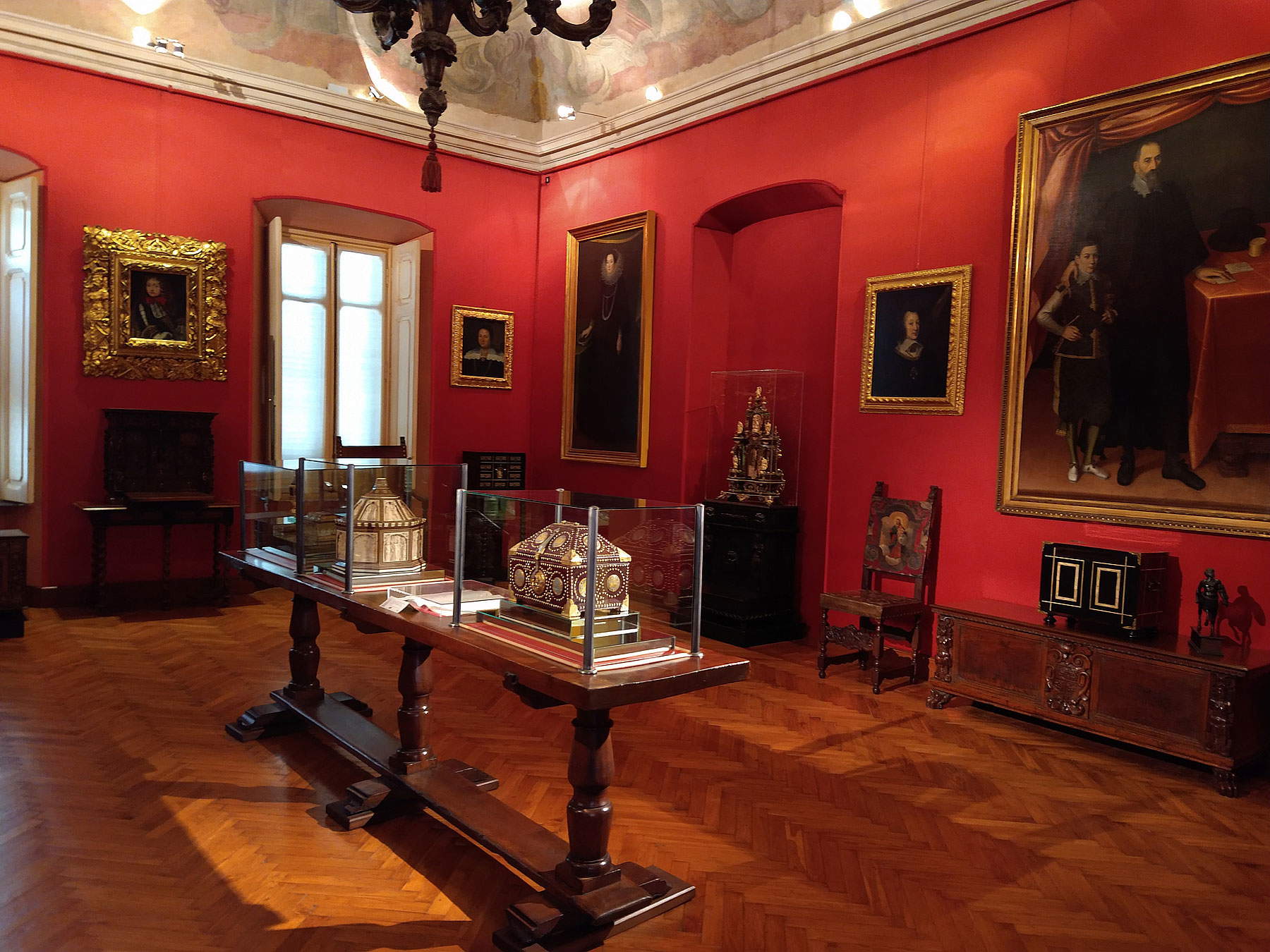
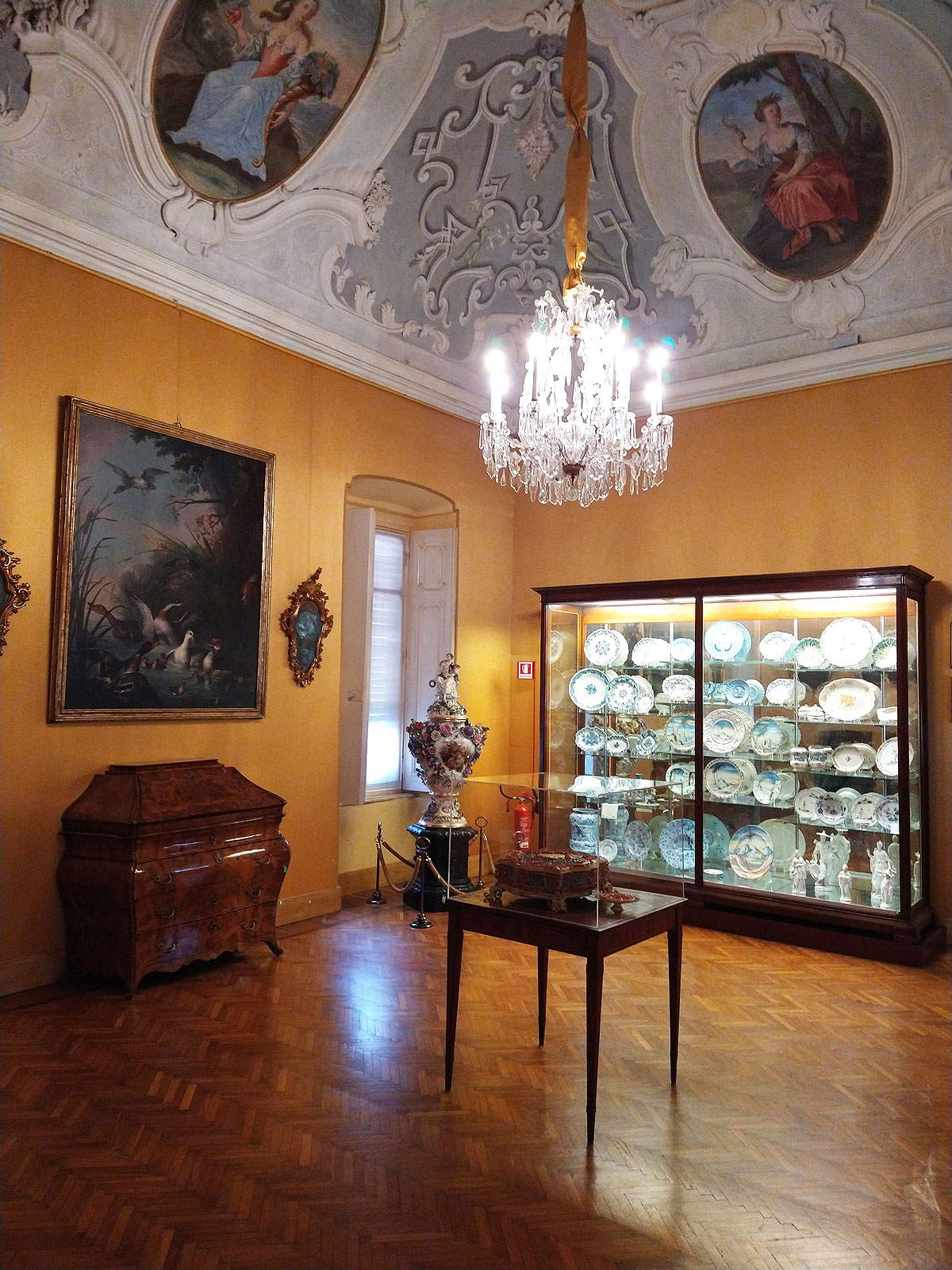
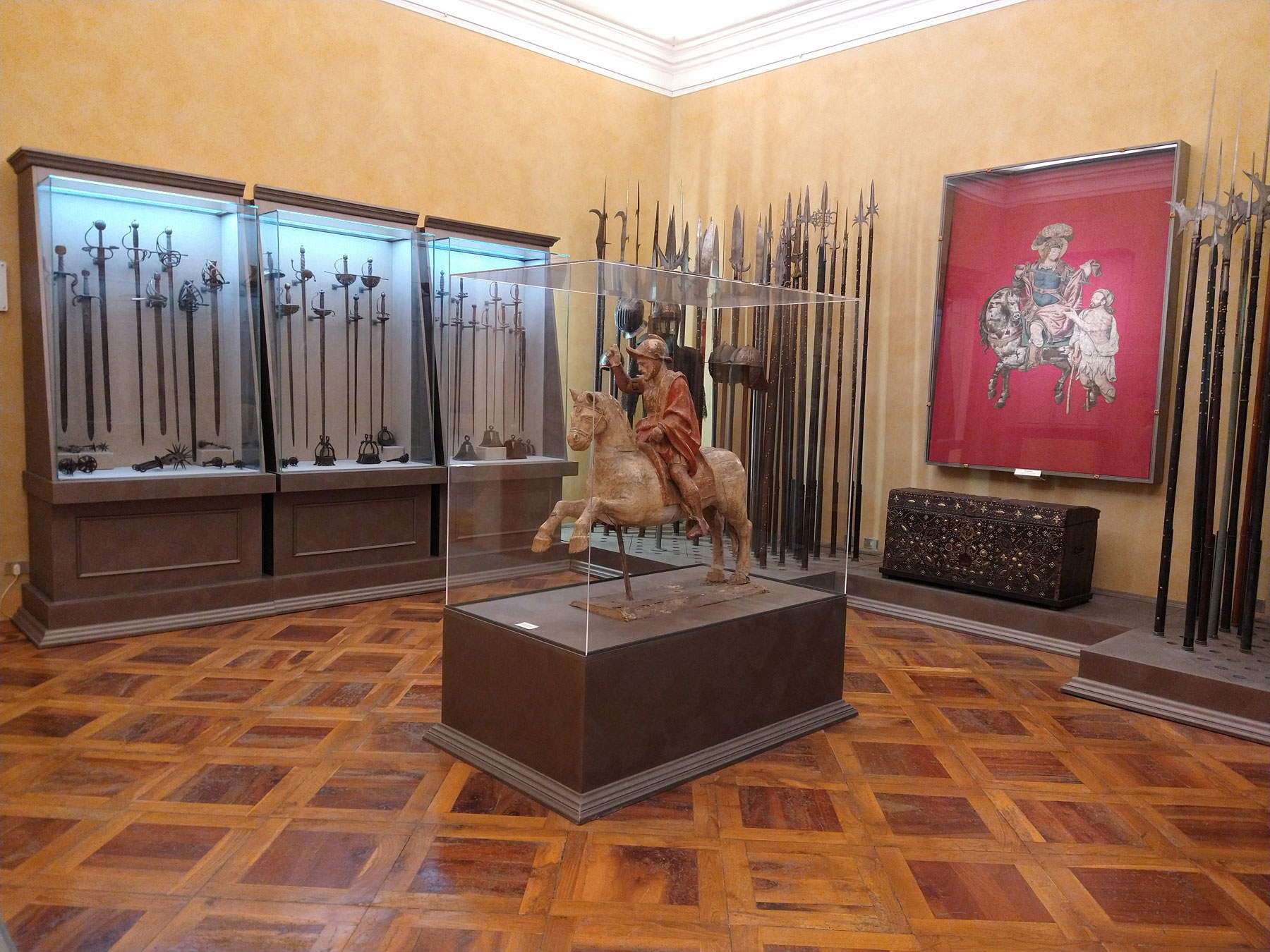
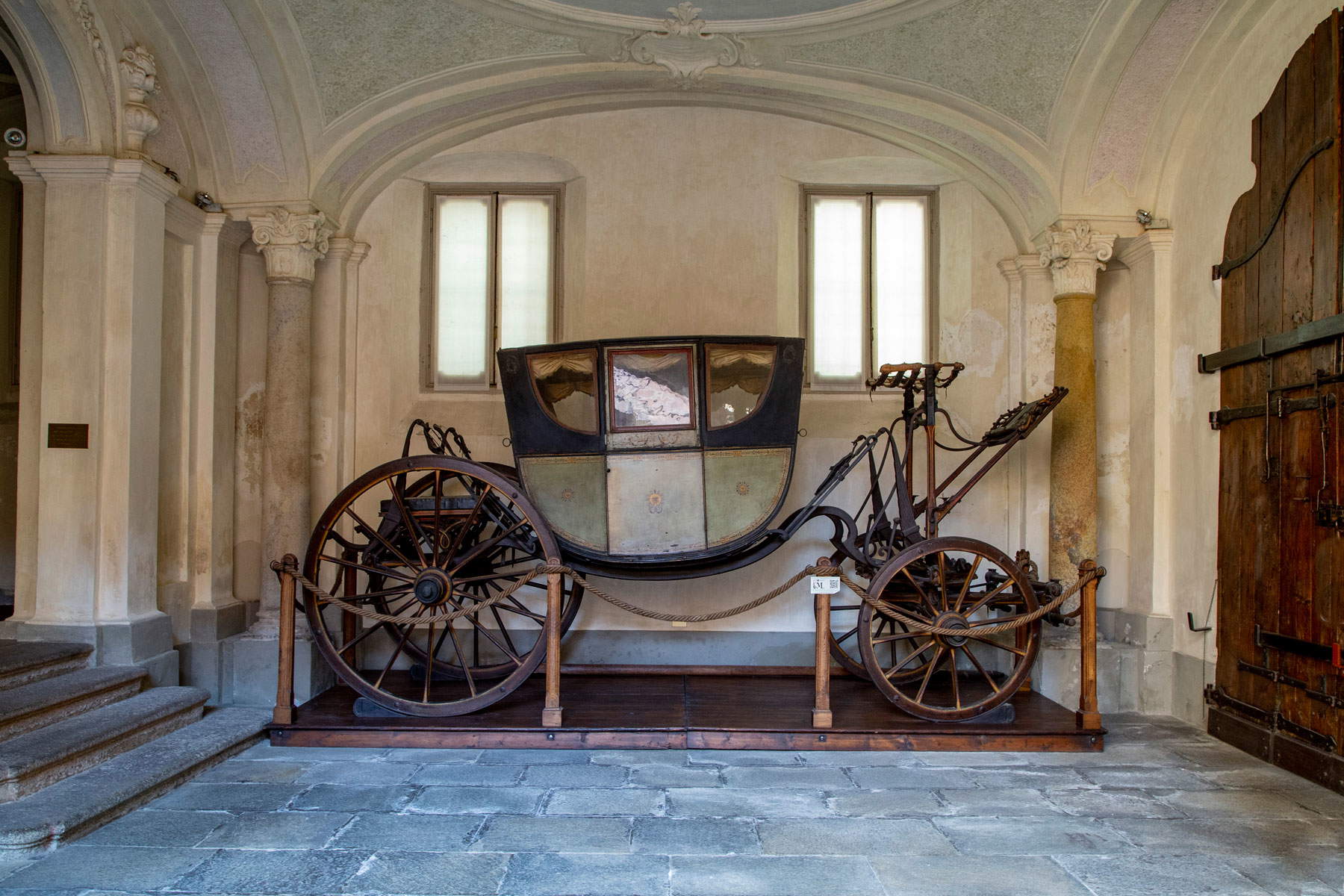
In the nineteenth century the palace underwent further transformations, particularly from 1871, when the building was inherited by the notary and collector Camillo Leone (already in 1838 the Leone family succeeded the Langosco family in ownership). Camillo used some of the rooms to reside there, while the remaining ones he used for the display of his own art collections. In fact, his collections of applied arts, watermarks and weapons are still gathered here, encompassing a time span from the 16th century to the 19th century. In 1876 the notary abandoned his profession to devote himself entirely to collecting. A wide-ranging collectionism that was difficult to label, since, as he wrote in his will, his collections were “ancient objects of any kind and nature,” and with these “existing in the two floors of my dwelling house overlooking the Via della Torre,” he wished that a museum be “erected in this my native city, which bears the name of my family: which museum can never for whatever reason or circumstance neither be transported nor alienated.”
The first public opening of the Leone Museum took place in 1910, three years after his death. The most valuable object in the collection is certainly the Cardinal Guala Bicchieri casket of Limousin manufacture dating from 1220-1225. The casket features enameled medallions: fifteen, in reservé gilded copper , have engravings with profane subjects, such as hunting, chivalry and courtly love, except for one that depicts Saint Jerome and the lion; two medallions show allegories of the months of February and April and another two half-naked wrestlers. The cardinal, who initiated the construction of the Basilica of St. Andrew in Vercelli, donated the precious casket to the abbot of the same basilica, Tommaso Gallo, in 1224. Camillo Leone bought it on the antiquities market in 1883 for the sum of 8,000 liras (the handwritten purchase note dated August 2, 1883 is also on display at the museum next to the casket). It is the only object that belonged to Guala Bicchieri still present in Vercelli.
In addition to his art collections, Camillo Leone owned a rich collection of old books, now gathered in the museum library located in Casa Alciati. Books were a passion for him both to collect and to consult to further his historical, archaeological, artistic and numismatic knowledge. The Library preserves illuminated manuscripts, rare editions related to the Vercelli area, incunabula and cinquecentine; there are also manuscripts and texts from the seventeenth to the nineteenth centuries covering various subjects: from law to medicine, literature, history, architecture and art, numismatics and ceramics.
For more than a hundred years, the Leone Museum has preserved its founder’s rich and varied collection and tells the story of Vercelli and its territory, to which it is a witness and guardian.
Warning: the translation into English of the original Italian article was created using automatic tools. We undertake to review all articles, but we do not guarantee the total absence of inaccuracies in the translation due to the program. You can find the original by clicking on the ITA button. If you find any mistake,please contact us.